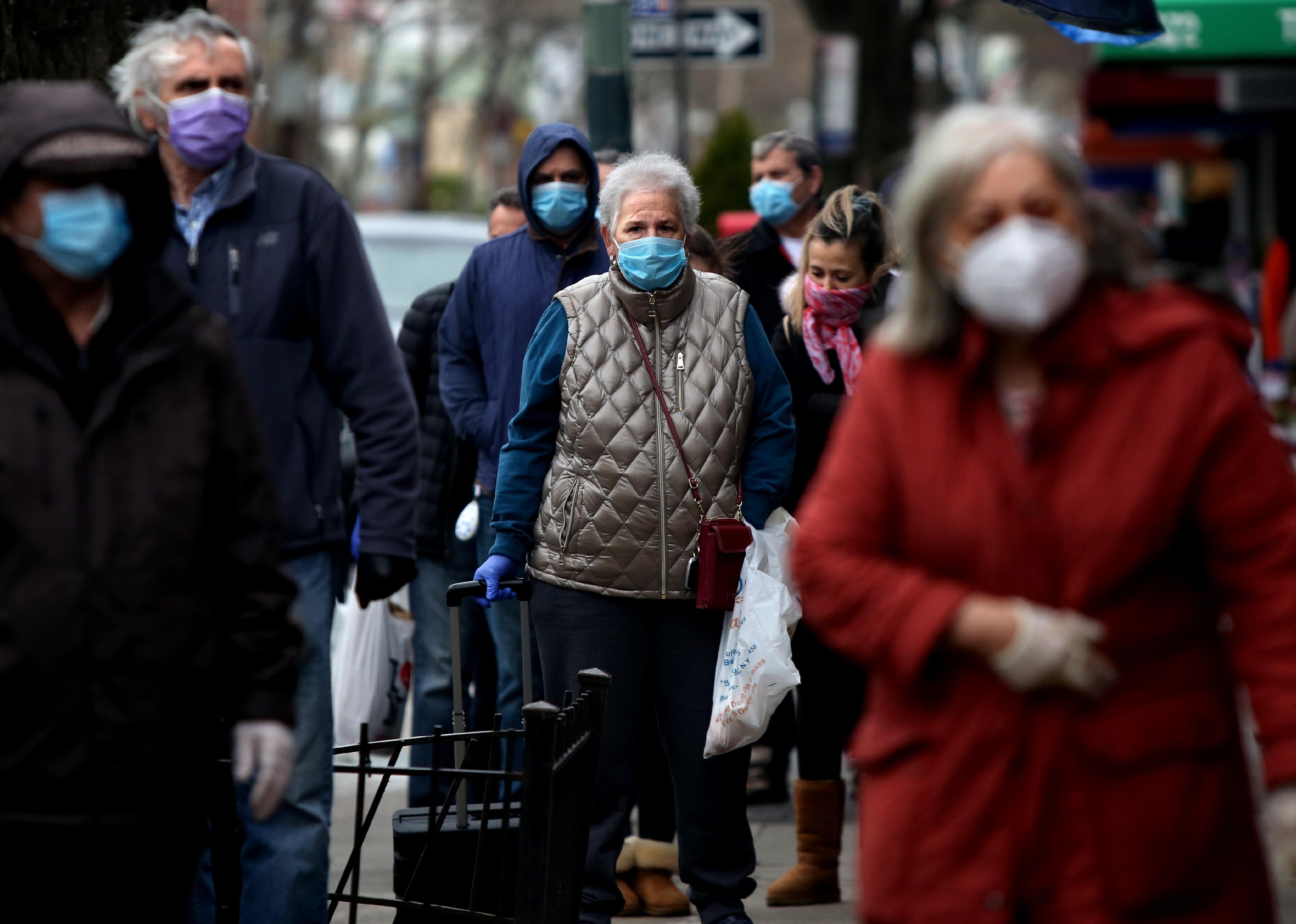
States with the populations most vulnerable to COVID-19
States with the populations most vulnerable to COVID-19
Some communities and people are more vulnerable to the novel coronavirus not only because of underlying health conditions or age, but also because of where they live, where they work, their access to health care, their earnings, and the discrimination they face. These and other social determinants of health influence who gets affected by COVID-19 and how.
In counties across the country, people of color are dying at higher rates than white people. In several states, people over 65 represent a larger share of COVID-19 cases and deaths relative to their share of the population, as nursing homes across the country have experienced outbreaks.
To identify communities more vulnerable to the pandemic, the Surgo Foundation released the COVID-19 Community Vulnerability Index (CCVI) in April. The CCVI defines "more vulnerable" communities as those which "have a limited ability to mitigate, treat, and delay transmission of a pandemic disease, and to reduce its economic and social impacts."
The index uses six "themes," or groups of indicators; four themes are adopted from the Center for Disease Control and Prevention's Social Vulnerability Index, which measures a community's resilience from all types of natural disaster from a socio-demographic perspective, and the remaining two themes (epidemiological factors and health care system factors) have been compiled by Surgo Foundation researchers specifically to address COVID-19. The data used to calculate scores comes from 2014–2018, depending on the indicator. The index's full methodology (including sources for all indicators) is available here.
In this story, Stacker lays out the CCVI scores for each state, as well as each state's two biggest areas of vulnerability (i.e. themes which received the highest scores) and two specific indicators that contributed to each of those areas. Scores range from 0 to 1, and a higher value indicates a more vulnerable population. CCVI scores above 0.6 indicate high- to very-high-vulnerability communities.
Read on to see which states are more vulnerable and why.
You may also like: How the biggest companies in America are impacted by COVID-19

#51. New Hampshire
- Overall CCVI score: 0.00
- #1 biggest area of vulnerability: Housing type & transportation (score: 0.38)
--- 60,250 housing structures with 10+ units (9.5%)
--- 27,300 households with no vehicle available (5.2% of all households)
- #2 biggest area of vulnerability: Epidemiological factors (score: 0.36)
--- 30% of adults have high blood pressure
--- 13.2% of adults have asthma
While New Hampshire is far from the most vulnerable to COVID-19, its older population inherently brings greater risk. Individuals living in crowded housing may find it harder to socially distance. Residents in buildings with 10 or more housing units may also have to touch potentially infected surfaces, like mailboxes and doors, shared with many neighbors.

#50. Vermont
- Overall CCVI score: 0.02
- #1 biggest area of vulnerability: Housing type & transportation (score: 0.76)
--- 19,566 housing structures with 10+ units (5.9%)
--- 17,260 households with no vehicle available (6.6% of all households)
- #2 biggest area of vulnerability: Household composition & disability (score: 0.38)
--- 113,550 over age 65 (18.2% of population)
--- 88,944 disabled over age 5 (14.4% of population)
In Vermont, rural areas have a larger population of older people than more urban counties, and these towns have less primary care doctors—a barrier for symptomatic people as primary care referrals are needed for testing. These areas are also further from major hospitals, an obstacle to receiving necessary care. In Vermont’s urban areas, several outbreaks have been linked to long-term care facilities.

#49. Maine
- Overall CCVI score: 0.04
- #1 biggest area of vulnerability (tie): Household composition & disability (score: 0.72)
--- 259,176 over age 65 (19.4% of population)
--- 209,438 disabled over age 5 (15.9% of population)
- #1 biggest area of vulnerability (tie): Housing type & transportation (score: 0.72)
--- 36,020 housing structures with 10+ units (4.9%)
--- 40,732 households with no vehicle available (7.3% of all households)
By the end of April, adults over 60 accounted for 44% of COVID-19 cases in the state, according to Maine’s Division of Disease Surveillance; more than half of the state’s 51 recorded COVID-19 deaths at that time were individuals in nursing homes with outbreaks. Elderly people in nursing homes may be at greater risk of catching the coronavirus given that residents live in close quarters. Once they catch the virus, they’re at greater risk of more severe disease as older people tend to have less effective immune systems.

#48. North Dakota
- Overall CCVI score: 0.06
- #1 biggest area of vulnerability: Housing type & transportation (score: 0.94)
--- 73,282 housing structures with 10+ units (19.9%)
--- 15,942 households with no vehicle available (5.1% of all households)
- #2 biggest area of vulnerability: Healthcare system factors (score: 0.46)
--- 2,003 hospital beds
--- $3,817 healthcare spending per capita
Crowded housing structures might put some North Dakota residents at greater risk of contracting COVID-19, and those who lack a vehicle may be at higher risk of exposure if they rely on public transit. While North Dakota was also ranked vulnerable in terms of its hospital beds, the state has set up eight field hospitals that could support an additional 4,000 beds if needed.

#47. Wisconsin
- Overall CCVI score: 0.08
- #1 biggest area of vulnerability: Housing type & transportation (score: 0.44)
--- 284,323 housing structures with 10+ units (10.6%)
--- 158,139 households with no vehicle available (6.7% of all households)
- #2 biggest area of vulnerability: Healthcare system factors (score: 0.36)
--- 11,050 hospital beds
--- $29,722 healthcare spending per capita
Peaks in Medicaid enrollment have historically occurred during recessions, a trend projected to continue across the U.S. in 2020. In Wisconsin, health officials have warned that the state needs to prepare for a surge in Medicaid enrollment that will exceed the state's budget.
You may also like: 50 tips for improving your work remote life
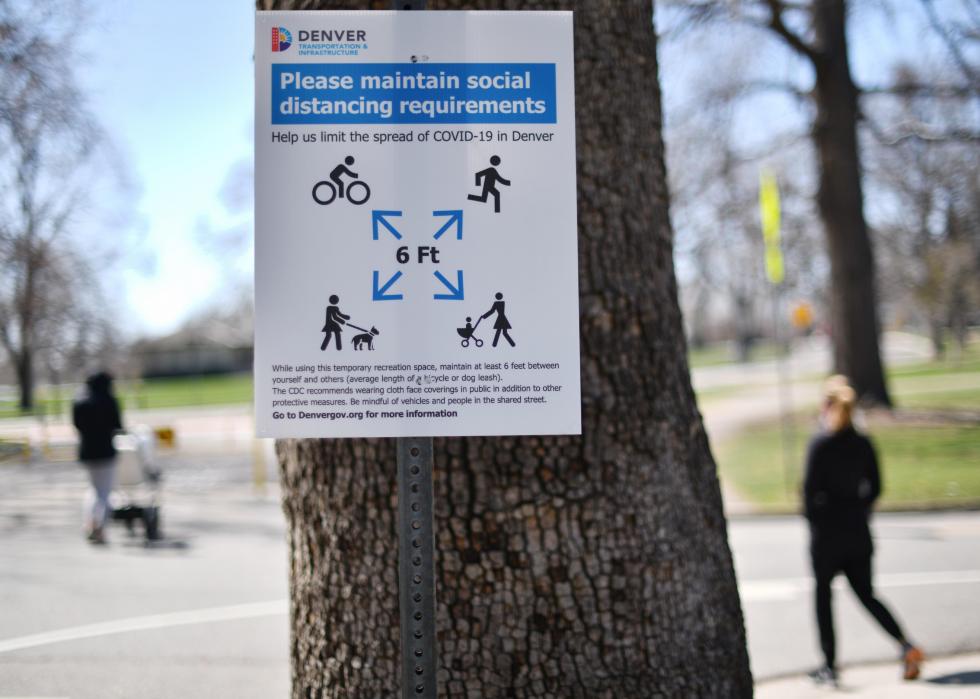
#46. Colorado
- Overall CCVI score: 0.10
- #1 biggest area of vulnerability: Minority status & language (score: 0.62)
--- 875,557 non-white (15.8% of population)
--- 60,209 households with limited English (2.8% of all households)
- #2 biggest area of vulnerability: Healthcare system factors (score: 0.52)
--- 8,243 hospital beds
--- $20,581 healthcare spending per capita
In mid-April, the Colorado Department of Public Health and Environment (CDPHE) reported that minorities make up a disproportionate amount of COVID-19 cases: Latino people account for 22% of the state’s population but at the time accounted for about 28% of cases, while Black people make up 4% of the population but represented 7% of cases. Jill Hunsaker-Ryan, executive director of the CDPHE, told Jim Hill and Andrew Kenney of Colorado Public Radio: “There have been generations of institutionalized barriers to things like preventive medical care, healthy food, safe and stable housing, quality education, reliable transportation, and clean air. Research shows that these types of factors are the most predictive of health outcomes.”
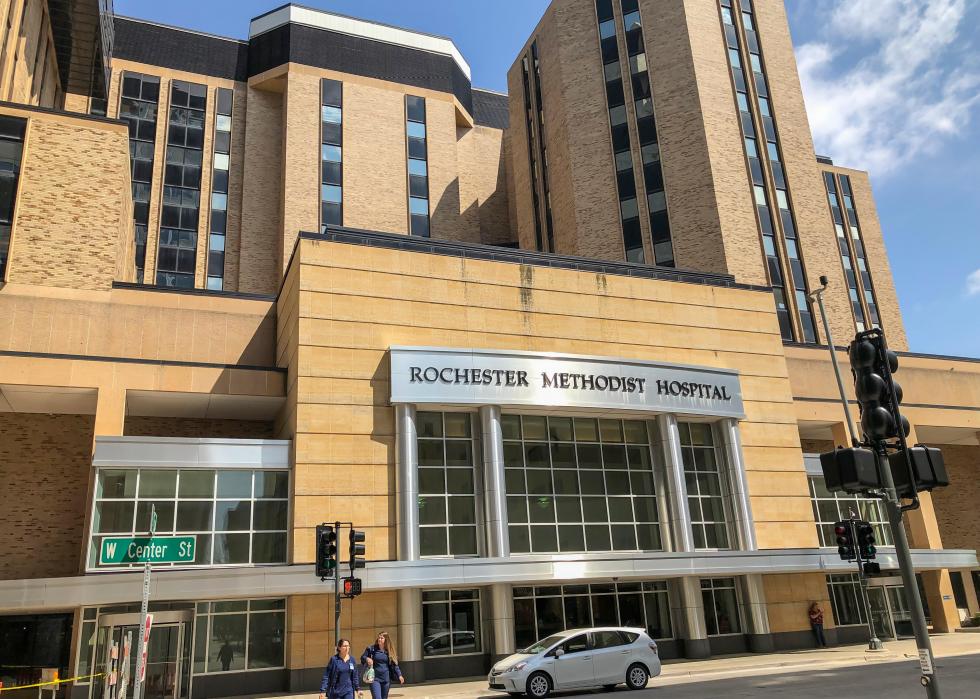
#45. Minnesota
- Overall CCVI score: 0.12
- #1 biggest area of vulnerability: Healthcare system factors (score: 0.68)
--- 10,518 hospital beds
--- $28,265 healthcare spending per capita
- #2 biggest area of vulnerability: Housing type & transportation (score: 0.64)
--- 379,173 housing structures with 10+ units (15.7%)
--- 148,982 households with no vehicle available (6.9% of all households)
Hospitals all over the U.S. have canceled appointments and elective surgeries—important revenue sources—to reduce spread and make room for COVID-19 patients. To address these cost issues and prepare for a surge of cases, beginning in March, Minnesota health care systems reduced employee hours to save costs, including hours of nurses. Other hospitals laid off hundreds of staff members.
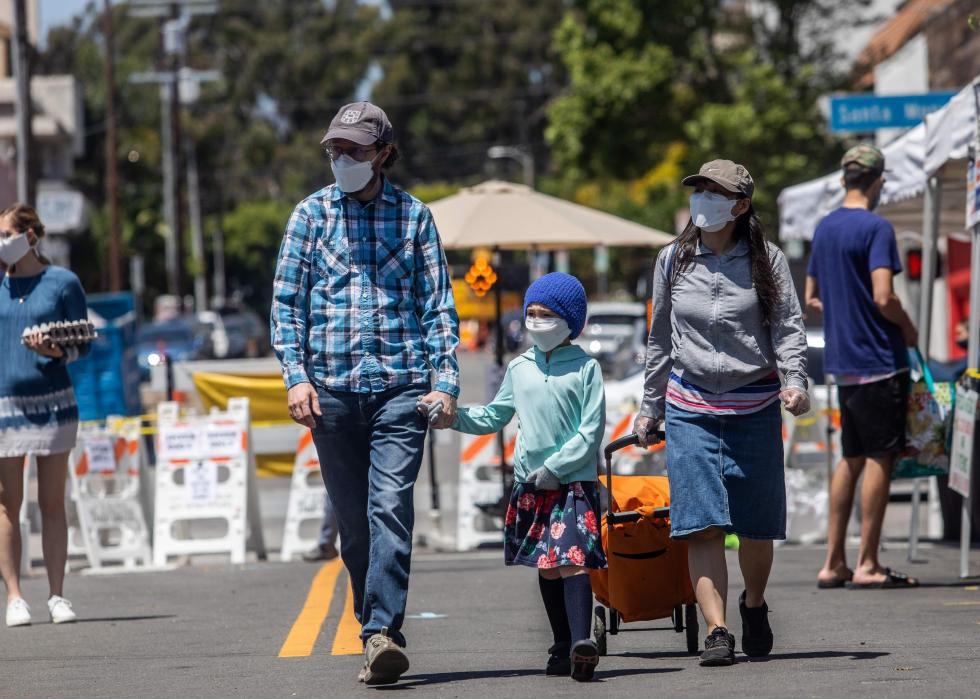
#44. California
- Overall CCVI score: 0.14
- #1 biggest area of vulnerability: Minority status & language (score: 1.00)
--- 15.6 million non-white (39.9% of population)
--- 1.2 million households with limited English (9.1% of all households)
- #2 biggest area of vulnerability: Housing type & transportation (score: 0.86)
--- 2.4 million housing structures with 10+ units (17.2%)
--- 939,034 households with no vehicle available (7.2% of all households)
While California ranks low for its overall CCVI score, it ranks highest out of all the states on the minority status & language vulnerability. Black and Latino Californians are dying more frequently of COVID-19, comprising a disproportionate share of deaths compared to white or Asian individuals. This is attributed to higher rates of underlying health conditions—like heart disease, obesity, diabetes, and asthma—as well as overcrowded housing conditions and “testing deserts.”

#43. Wyoming
- Overall CCVI score: 0.16
- #1 biggest area of vulnerability: Housing type & transportation (score: 0.80)
--- 15,939 housing structures with 10+ units (5.8%)
--- 8,873 households with no vehicle available (3.8% of all households)
- #2 biggest area of vulnerability: Household composition & disability (score: 0.58)
--- 87,777 over age 65 (15.1% of population)
--- 74,118 disabled over age 5 (13.0% of population)
Wyoming has low case and death counts relative to other states (the Wyoming Infectious Disease Epidemiology Unit reported about 480 confirmed cases and seven deaths as of May 7), which has prompted the state to allow certain businesses to reopen May 1. Teton County, which has one of the highest case counts in Wyoming, is following a different reopening timeline, acting with more caution to prevent further coronavirus spread.

#42. Utah
- Overall CCVI score: 0.18
- #1 biggest area of vulnerability: Healthcare system factors (score: 0.82)
--- 4,630 hospital beds
--- $9,440 healthcare spending per capita
- #2 biggest area of vulnerability: Minority status & language (score: 0.48)
--- 413,294 non-white (13.6% of population)
--- 22,404 households with limited English (2.3% of all households)
A Centers for Medicare and Medicaid Services analysis of state health care data found that states with relatively low health care spending per capita tend to have higher rates of uninsurance. While data from the Kaiser Family Foundation shows that Utah's rate of uninsurance, 9%, is the same as the national average, the rate of uninsurance among Hispanic and Native American people is more than double that figure.
You may also like: Mindful meditation, yoga, and 23 other ways to relieve stress

#41. South Dakota
- Overall CCVI score: 0.20
- #1 biggest area of vulnerability: Housing type & transportation (score: 0.90)
--- 41,244 housing structures with 10+ units (10.6%)
--- 17,674 households with no vehicle available (5.2% of all households)
- #2 biggest area of vulnerability: Household composition & disability (score: 0.68)
--- 136,808 over age 65 (15.8% of population)
--- 99,939 disabled over age 5 (11.8% of population)
South Dakota has not issued a stay-at-home order for all residents but has issued one for people with chronic medical conditions and people over 65 in Minnehaha and Lincoln Counties. These people are at risk of more severe disease and death from COVID-19, and the two counties have some of the highest case counts in the state according to data from the Johns Hopkins University Coronavirus Resource Center.

#40. Virginia
- Overall CCVI score: 0.22
- #1 biggest area of vulnerability: Minority status & language (score: 0.66)
--- 2.7 million non-white (32.0% of population)
--- 83,239 households with limited English (2.7% of all households)
- #2 biggest area of vulnerability: Healthcare system factors (score: 0.42)
--- 17,719 hospital beds
--- $35,011 healthcare spending per capita
In some places, including Virginia, it’s difficult to determine how the coronavirus is affecting different racial groups. According to data from the Virginia Department of Health, race and ethnicity data were listed as “Not Reported” for 32% of confirmed cases at the end of April. This is somewhat of an improvement from earlier data collection efforts, as over half of confirmed cases lacked race and ethnicity data at the beginning of April.
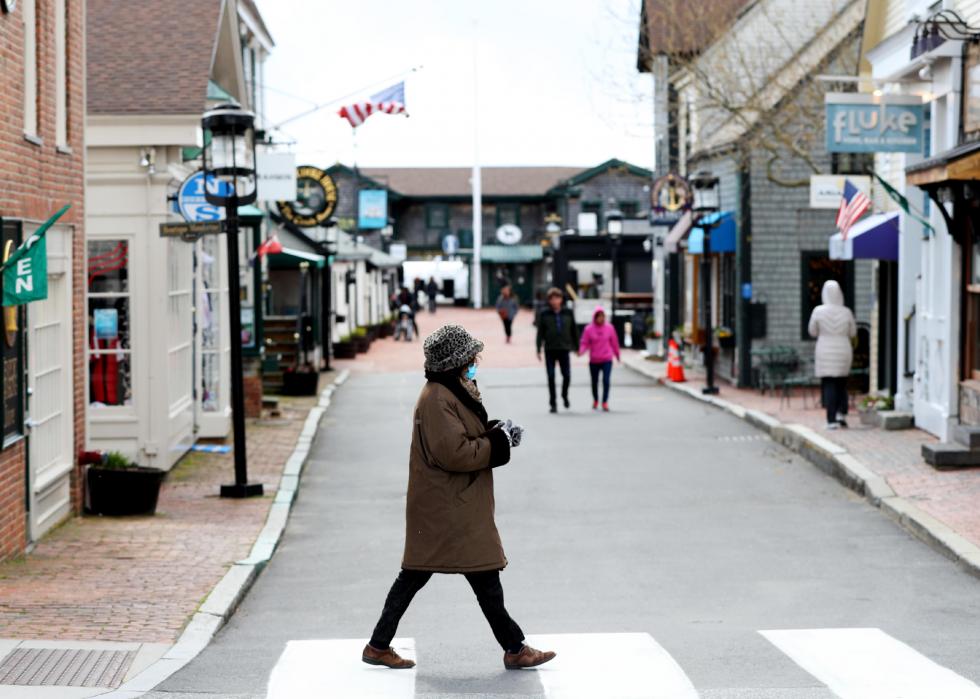
#39. Rhode Island
- Overall CCVI score: 0.24
- #1 biggest area of vulnerability: Minority status & language (score: 0.54)
--- 202,109 non-white (19.1% of population)
--- 23,316 households with limited English (5.7% of all households)
- #2 biggest area of vulnerability: Socioeconomic status (score: 0.52)
--- 133,055 below poverty level (13.1% of population)
--- $34,619 per capita income
Rhode Island has not been collecting race and ethnicity data for all people undergoing COVID-19 testing. Reports have shown that over 40% of those who test positive are Latino, but because the state lacks demographic information on about half of those who test positive, health officials are unsure if this is the true proportion. To better communicate health information to the Latino community, the governor and officials from the commerce department are going on Spanish-language radio shows and translating press events into Spanish on Facebook.

#38. Montana
- Overall CCVI score: 0.26
- #1 biggest area of vulnerability: Housing type & transportation (score: 0.88)
--- 28,824 housing structures with 10+ units (5.7%)
--- 21,492 households with no vehicle available (5.1% of all households)
- #2 biggest area of vulnerability: Healthcare system factors (score: 0.72)
--- 2,202 hospital beds
--- $4,615 healthcare spending per capita
Like other states, Montana prepared for a potential surge in cases and bed shortages by canceling elective surgeries. Bozeman Deaconess Hospital began speeding up a construction project to add bed capacity.
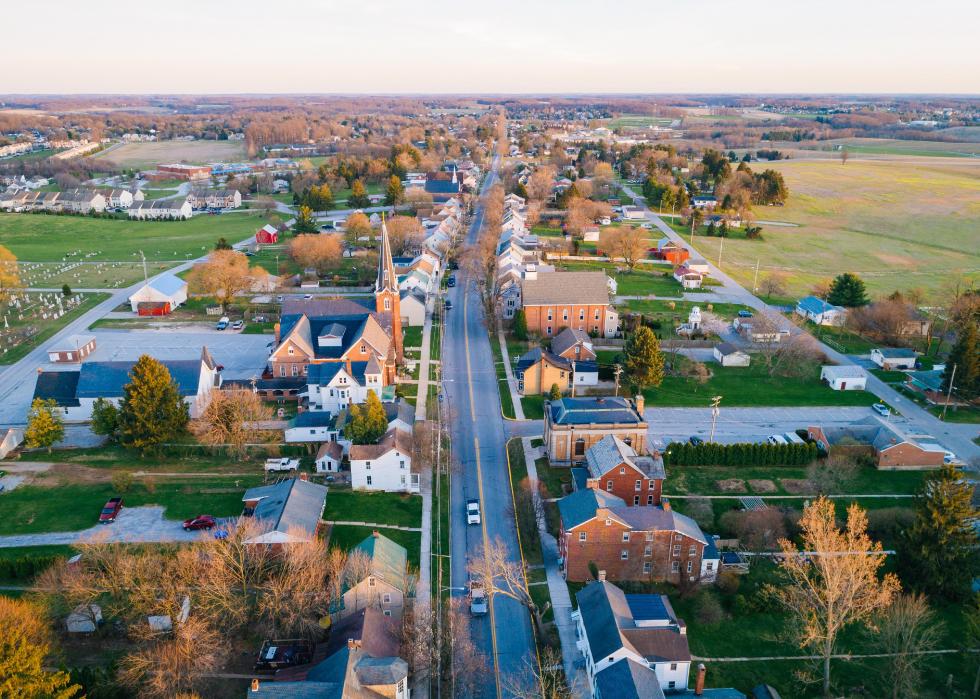
#37. Pennsylvania
- Overall CCVI score: 0.28
- #1 biggest area of vulnerability: Epidemiological factors (score: 0.68)
--- 32.6% of adults have high blood pressure
--- 10.1% of adults have asthma
- #2 biggest area of vulnerability: Household composition & disability (score: 0.52)
--- 2.2 million over age 65 (17.4% of population)
--- 1.7 million disabled over age 5 (13.9% of population)
In Pennsylvania, people over 65 accounted for 27% of confirmed COVID-19 cases and nearly 40% of hospitalizations as of May 1, according to the Pennsylvania National Electronic Disease Surveillance System. The state Health Secretary also said that a significant number of those who died had medical conditions, like high blood pressure.
You may also like: How can I stay safe while grocery shopping? And answers to 24 other coronavirus questions

#36. Connecticut
- Overall CCVI score: 0.30
- #1 biggest area of vulnerability: Minority status & language (score: 0.70)
--- 846,624 non-white (23.6% of population)
--- 71,137 households with limited English (5.2% of all households)
- #2 biggest area of vulnerability: Healthcare system factors (score: 0.66)
--- 8,847 hospital beds
--- $22,113 healthcare spending per capita
With just over half of the confirmed cases showing race and ethnicity data at the beginning of April, civil rights and health advocate leaders pressed state officials to better track this data to show how minorities are affected. To address health care system vulnerabilities and free up hospital beds, Connecticut is designating certain nursing facilities as COVID-19 recovery centers for discharged patients from the hospital who may still be infectious.
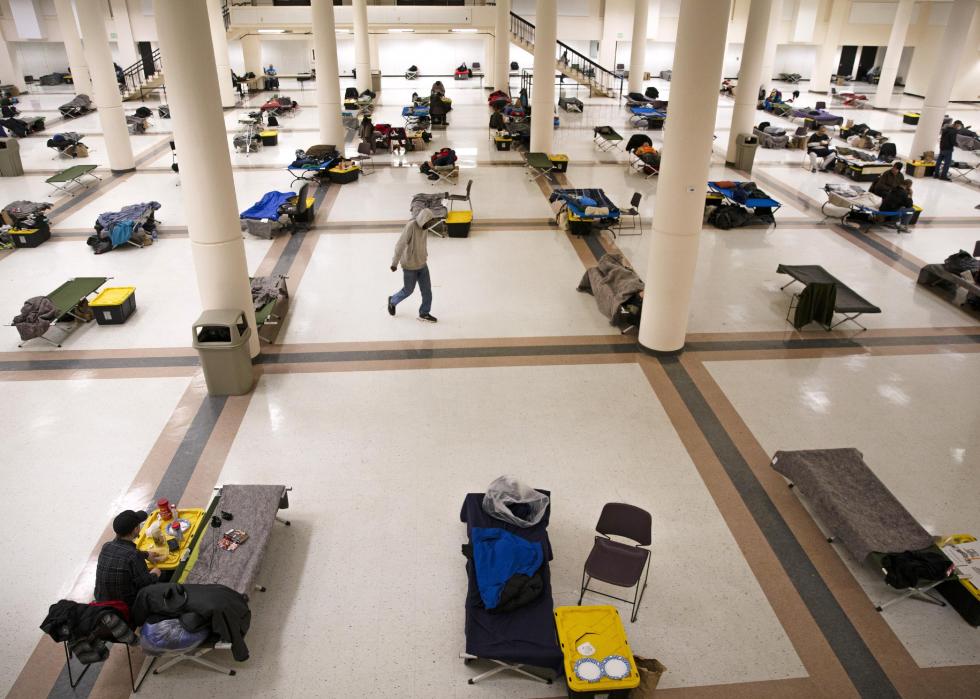
#35. Washington
- Overall CCVI score: 0.32
- #1 biggest area of vulnerability: Housing type & transportation (score: 0.84)
--- 479,554 housing structures with 10+ units (15.6%)
--- 192,165 households with no vehicle available (6.9% of all households)
- #2 biggest area of vulnerability: Minority status & language (score: 0.76)
--- 1.7 million non-white (24.0% of population)
--- 106,515 households with limited English (3.8% of all households)
King county, which includes Seattle, set up additional housing structures to allow social distancing in homeless shelters. People of color, Latinos in particular, have accounted for a disproportionately large share of confirmed COVID-19 cases in Washington, which may be, in part, because Latinos and other immigrant groups tend to live in multigenerational households, meaning that more people can serve as potential viral vectors, exposing family members.
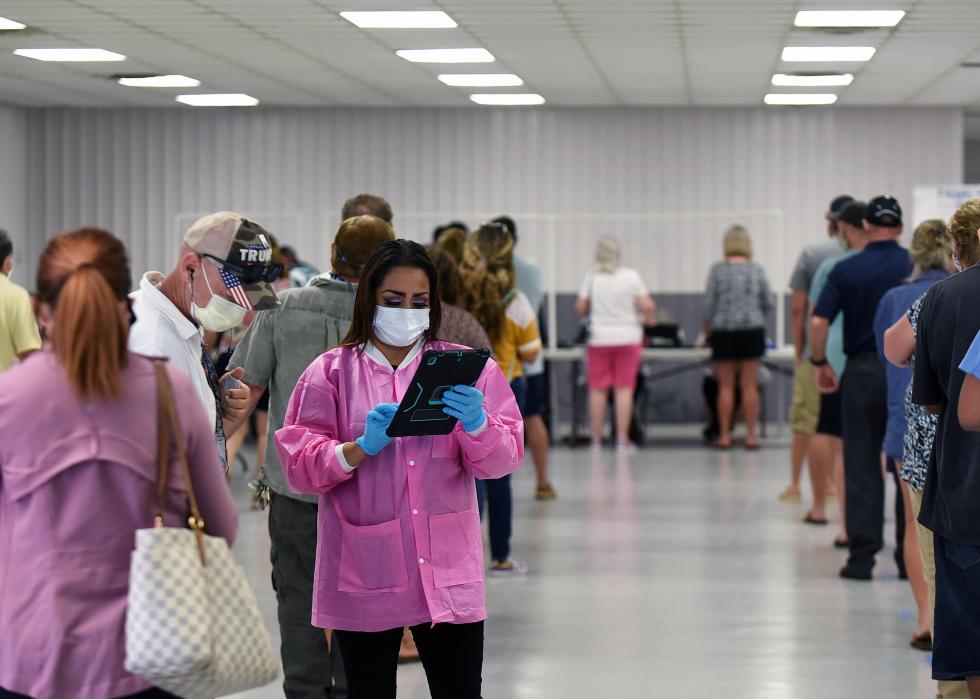
#34. Florida
- Overall CCVI score: 0.34
- #1 biggest area of vulnerability: Minority status & language (score: 0.88)
--- 5.1 million non-white (24.6% of population)
--- 524,246 households with limited English (6.9% of all households)
- #2 biggest area of vulnerability: Socioeconomic status (score: 0.68)
--- 3.0 million below poverty level (14.8% of population)
--- $30,197 per capita income
In early April USA Today’s Josh Salman and Mark Nichols showed that testing rates in Florida varied according to counties’ median incomes. Even where drive-through test sites are available, racial minorities, the elderly, and individuals with disabilities are often excluded. A couple of walk-up testing sites in minority neighborhoods that do not require people to drive up have somewhat expanded access to these communities.
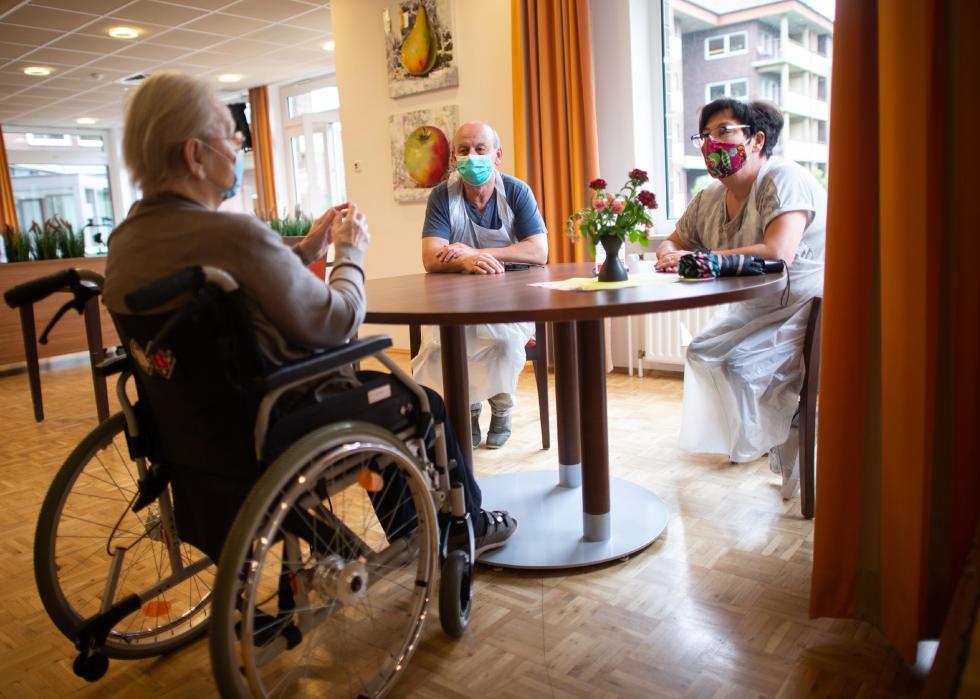
#33. Nebraska
- Overall CCVI score: 0.36
- #1 biggest area of vulnerability: Epidemiological factors (score: 0.56)
--- 30.6% of adults have high blood pressure
--- 8.2% of adults have asthma
- #2 biggest area of vulnerability: Household composition & disability (score: 0.48)
--- 286,080 over age 65 (15% of population)
--- 215,423 disabled over age 5 (11.5% of population)
Several outbreaks have occurred at Nebraska nursing homes and senior living facilities. Across the U.S. thousands of deaths from COVID-19 have been connected to coronavirus outbreaks in nursing homes and long-term care facilities.
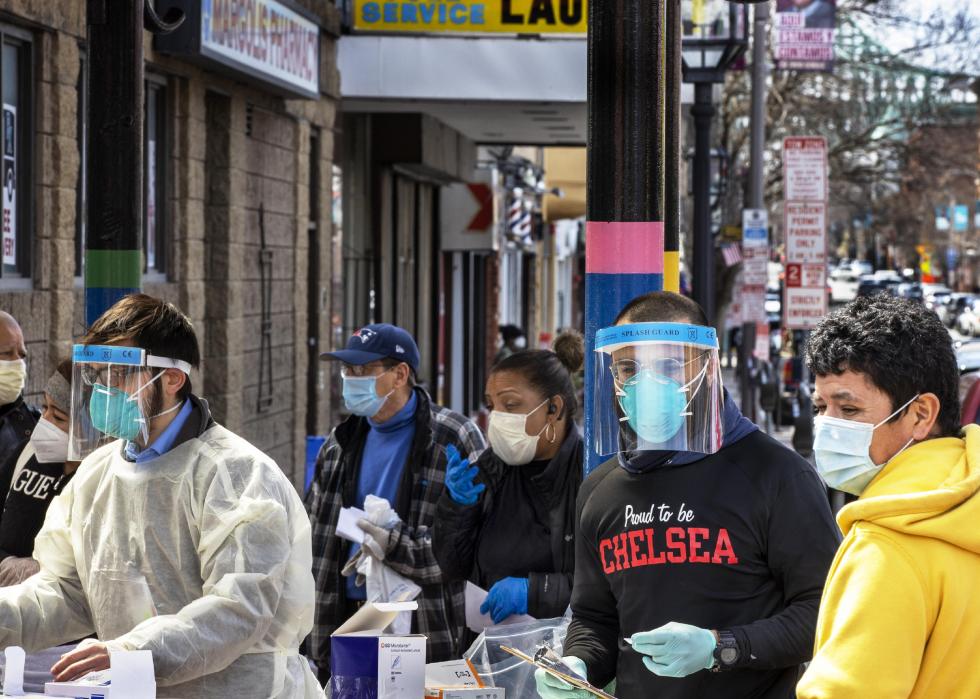
#32. Massachusetts
- Overall CCVI score: 0.38
- #1 biggest area of vulnerability: Epidemiological factors (score: 0.72)
--- 28.6% of adults have high blood pressure
--- 11.5% of adults have asthma
- #2 biggest area of vulnerability: Minority status & language (score: 0.64)
--- 1.5 million non-white (21.5% of population)
--- 152,975 households with limited English (5.9% of all households)
Historically, Massachusetts has reported high rates of asthma among its residents, with rates highest among Black adults and children and Hispanic children. Chelsea, a city near Boston with a large Latino population, had the highest rate of confirmed COVID-19 cases in the state at the end of April; Chelsea also has high asthma prevalence according to the Massachusetts Department of Public Health, which potentially puts residents at greater risk of COVID-19 complications. Air pollution also affects Chelsea residents, and scientists are investigating the role of long-term exposure to pollutants as a possible risk factor for COVID-19 death.
You may also like: 50 community resources to support Americans financially impacted by COVID-19

#31. Ohio
- Overall CCVI score: 0.40
- #1 biggest area of vulnerability: Epidemiological factors (score: 0.86)
--- 34.7% of adults have high blood pressure
--- 9.9% of adults have asthma
- #2 biggest area of vulnerability: Household composition & disability (score: 0.74)
--- 1.9 million over age 65 (16.3% of population)
--- 1.6 million disabled over age 5 (13.9% of population)
People over the age of 60 comprised over 90% of Ohio’s recorded COVID-19 deaths as of May 6, according to the Ohio Department of Health. Preliminary data from the state shows that every county in the state, except Fairfield and Scioto, have long-term care facilities that have reported at least one case of COVID-19 among residents. People who live in close quarters and have medical conditions are extremely vulnerable to more severe illness.
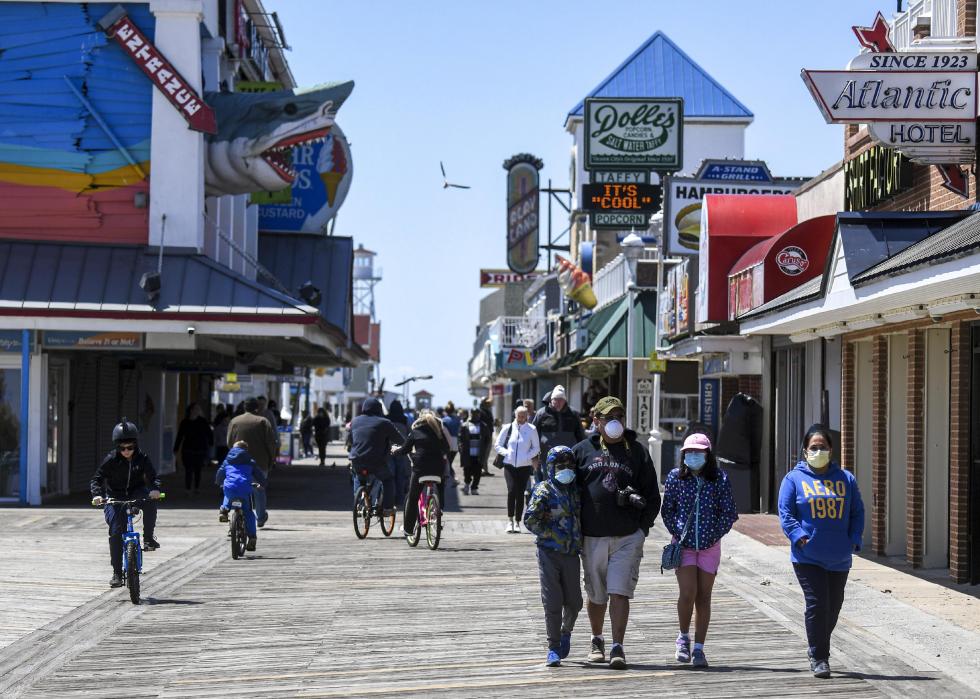
#30. Maryland
- Overall CCVI score: 0.42
- #1 biggest area of vulnerability: Minority status & language (score: 0.80)
--- 2.6 million non-white (43.8% of population)
--- 69,718 households with limited English (3.2% of all households)
- #2 biggest area of vulnerability: Epidemiological factors (score: 0.70)
--- 32.4% of adults have high blood pressure
--- 9.4% of adults have asthma
In Prince George County, bordering Washington D.C. on the Maryland side, Black people accounted for over 2,700 of about 7,600 confirmed COVID-19 cases at the beginning of May, with an additional 2,800 cases lacking race and ethnicity data. Despite being one of the wealthiest majority-Black counties in the U.S., Black residents are still more likely to be affected by underlying health conditions like hypertension and asthma, and have limited access to preventive health care compared to people in neighboring, whiter counties.

#29. Idaho
- Overall CCVI score: 0.44
- #1 biggest area of vulnerability: Healthcare system factors (score: 0.80)
--- 2,470 hospital beds
--- $6,043 healthcare spending per capita
- #2 biggest area of vulnerability: Household composition & disability (score: 0.78)
--- 253,801 over age 65 (15% of population)
--- 221,349 disabled over age 5 (13.3% of population)
Data from the Harvard Global Health Institute shows that if 40% of adults in the Boise region contract COVID-19 over the course of 12 months, about 8% would need to be hospitalized, demanding more than twice the number of available intensive care unit beds. Throughout April, several Idaho nursing homes experienced COVID-19 outbreaks. While nursing homes implemented infection control measures and disallowed visitors, the shortage of personal protective equipment, staffing, and tests likely contributed.
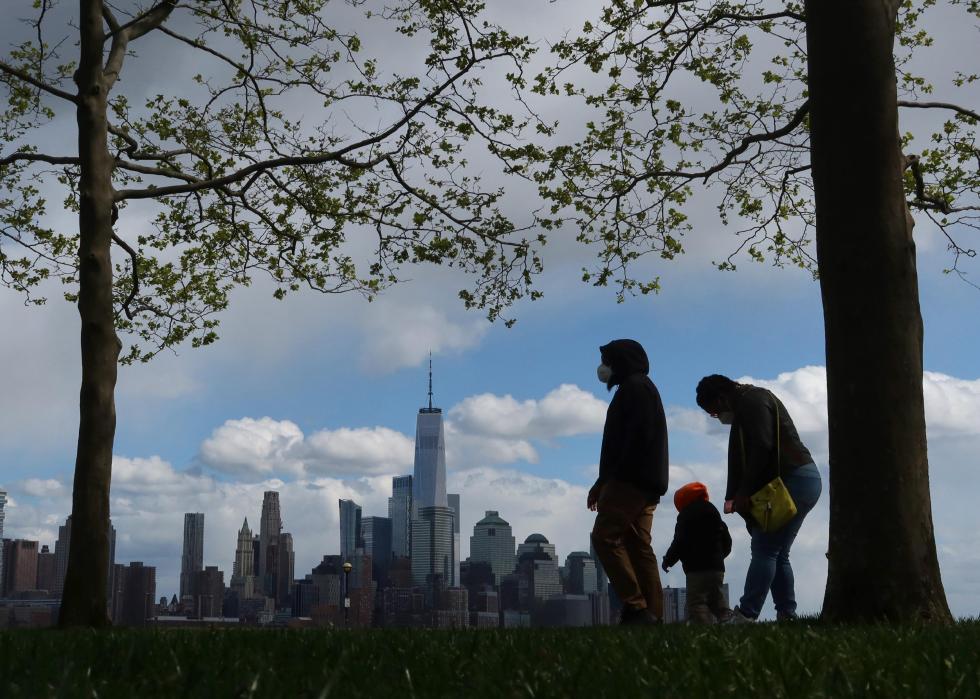
#28. New Jersey
- Overall CCVI score: 0.46
- #1 biggest area of vulnerability: Minority status & language (score: 0.90)
--- 2.9 million non-white (32.1% of population)
--- 226,180 households with limited English (7.0% of all households)
- #2 biggest area of vulnerability: Healthcare system factors (score: 0.62)
--- 20,207 hospital beds
--- $48,841 healthcare spending per capita
It is not uncommon for speakers with limited English to experience worse health outcomes either because they cannot access interpreters in hospitals or because interpreters make clinically significant errors, a relevant issue for New Jersey’s large Spanish-speaking population. Additionally, preliminary figures from the New Jersey Department of Health show that Hispanic people are disproportionately affected by the coronavirus, comprising 28.9% of confirmed COVID-19 cases for which race or ethnicity was reported, as of May 2. This group only accounts for 19% of the state’s population.

#27. Texas
- Overall CCVI score: 0.48
- #1 biggest area of vulnerability: Minority status & language (score: 0.96)
--- 7.2 million non-white (25.7% of population)
--- 753,508 households with limited English (7.9% of all households)
- #2 biggest area of vulnerability: Socioeconomic status (score: 0.72)
--- 4.2 million below poverty level (15.5% of population)
--- $30,143 per capita income
Texas used to have a state office that aimed to solve racial inequities in state health agencies—the Center for Elimination of Disproportionality and Disparities—but it was defunded in 2017. COVID-19's outsized effects on the Back community in Texas, a product of long-standing structural health disparities and racism, have convinced some Texas lawmakers that this office needs to be revived.

#26. Iowa
- Overall CCVI score: 0.50
- #1 biggest area of vulnerability: Healthcare system factors (score: 0.74)
--- 6,266 hospital beds
--- $15,378 healthcare spending per capita
- #2 biggest area of vulnerability: Household composition & disability (score: 0.60)
--- 513,312 over age 65 (16.4% of population)
--- 356,949 disabled over age 5 (11.6% of population)
The Harvard Global Health Institute predicts that over the course of a year, if 40% of adults contract COVID-19 an estimated 8% would require hospital care and the Des Moines area would need double the available intensive care unit beds. As of May 6, the state’s hospitals have not been overwhelmed, and almost half of inpatient beds remain available.
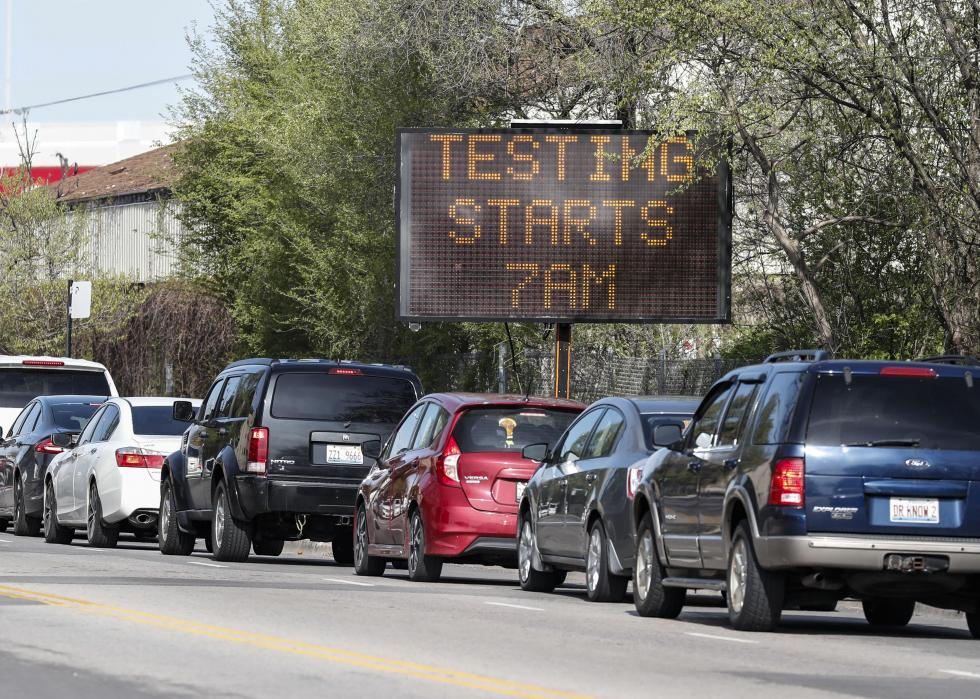
#25. Illinois
- Overall CCVI score: 0.52
- #1 biggest area of vulnerability: Epidemiological factors (score: 0.80)
--- 32.3% of adults have high blood pressure
--- 8.2% of adults have asthma
- #2 biggest area of vulnerability: Minority status & language (score: 0.74)
--- 3.6 million non-white (28.3% of population)
--- 218,048 households with limited English (4.5% of all households)
In Chicago, Illinois Department of Public Health mapping of confirmed COVID-19 cases showed that Black and brown communities are affected at higher rates than other groups. Throughout the state, Black people accounted for 19.9% of confirmed cases and 34.5% of deaths as of May 3, while they make up just 14.6% of the population. They experience underlying health conditions at higher rates, and have not been able to access testing as easily as those in majority-white communities.
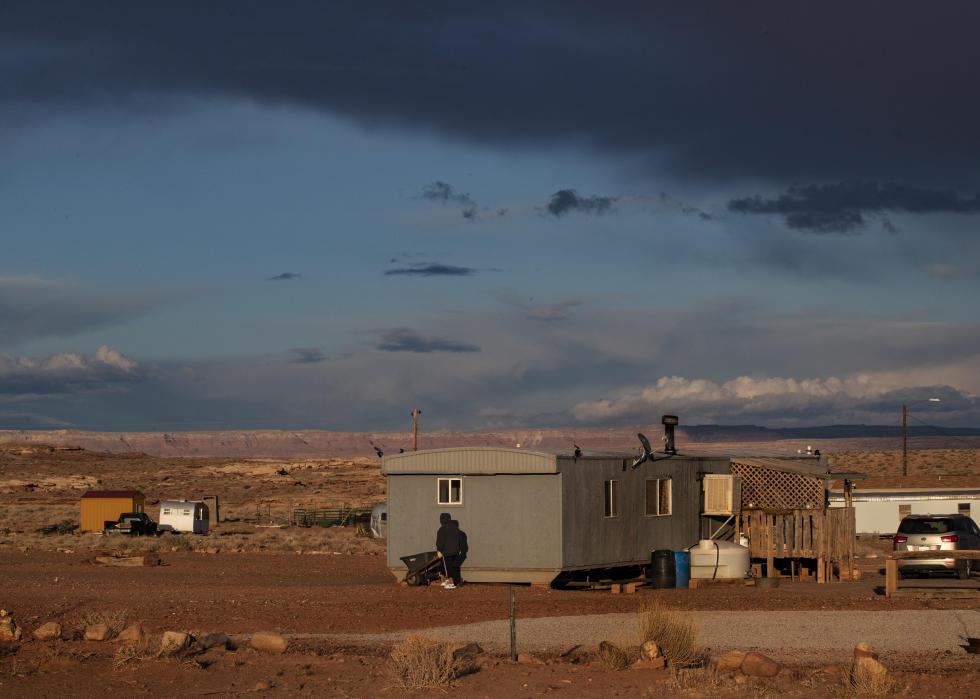
#24. Arizona
- Overall CCVI score: 0.54
- #1 biggest area of vulnerability: Minority status & language (score: 0.84)
--- 1.6 million non-white (22.8% of population)
--- 107,223 households with limited English (4.2% of all households)
- #2 biggest area of vulnerability: Socioeconomic status (score: 0.70)
--- 1.1 million below poverty level (16.1% of population)
--- $29,265 per capita income
As of May 1, there were over 2,300 confirmed COVID-19 cases in the Navajo Nation, mostly in Arizona, areas which have the highest rate of cases in the state. The vulnerability of Native Americans is greater than other groups as between 15–30% of those on Navajo Nation do not have clean, running water and overcrowded homes are common.

#23. Michigan
- Overall CCVI score: 0.56
- #1 biggest area of vulnerability (tie): Household composition & disability (score: 0.64)
--- 1.6 million over age 65 (16.3% of population)
--- 1.4 million disabled over age 5 (14.2% of population)
- #1 biggest area of vulnerability (tie): Epidemiological factors (score: 0.64)
--- 34.7% of adults have high blood pressure
--- 10.8% of adults have asthma
As of May 4, those over 60 represented about 41% of the state’s confirmed COVID-19 cases and 88% of deaths according to data from the Michigan Department of Health and Human Services. Hundreds of cases have been linked to nursing homes across the state.

#22. Delaware
- Overall CCVI score: 0.58
- #1 biggest area of vulnerability: Epidemiological factors (score: 0.82)
--- 34.9% of adults have high blood pressure
--- 10.6% of adults have asthma
- #2 biggest area of vulnerability: Minority status & language (score: 0.72)
--- 294,590 non-white (31.0% of population)
--- 8,239 households with limited English (2.3% of all households)
As in other states, adults with underlying medical conditions account for most COVID-19 deaths in Delaware. A large proportion of adults in Delaware have high blood pressure and asthma, potentially making them more vulnerable to the disease.
You may also like: COVID-19 is the latest example of zoonosis—here are 30 other diseases animals transmit to humans

#21. Alaska
- Overall CCVI score: 0.60
- #1 biggest area of vulnerability: Housing type & transportation (score: 0.98)
--- 23,544 housing structures with 10+ units (7.5%)
--- 23,959 households with no vehicle available (9.5% of all households)
- #2 biggest area of vulnerability: Minority status & language (score: 0.60)
--- 259,682 non-white (35.2% of population)
--- 5,294 households with limited English (2.1% of all households)
Several villages with largely Alaskan native populations were quick to respond to COVID-19 threats, with some implementing restrictions in the beginning of March. Alaskan native individuals face vulnerability to infectious disease due to crowded housing and lack of adequate sanitation services in rural areas.
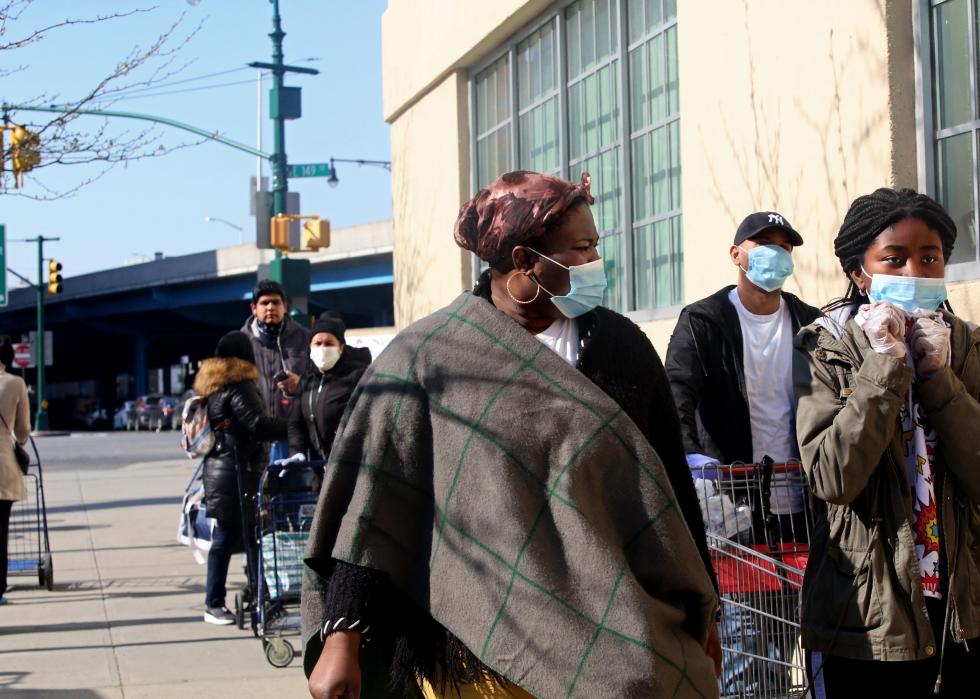
#20. New York
- Overall CCVI score: 0.62
- #1 biggest area of vulnerability: Housing type & transportation (score: 0.92)
--- 2.3 million housing structures with 10+ units (28.0%)
--- 2.1 million households with no vehicle available (29.1% of all households)
- #2 biggest area of vulnerability: Minority status & language (score: 0.82)
--- 7.1 million non-white (36.2% of population)
--- 593,391 households with limited English (8.1% of all households)
By the end of April, the number of confirmed COVID-19 cases per capita, hospitalization rates, and COVID-19 deaths were highest in the poorest New York City borough, the Bronx, which also has a high proportion of minorities. About 20% of residents also live in crowded apartments (more than one person per room) in some areas of the Bronx, potentially contributing to the quick spread of the virus.
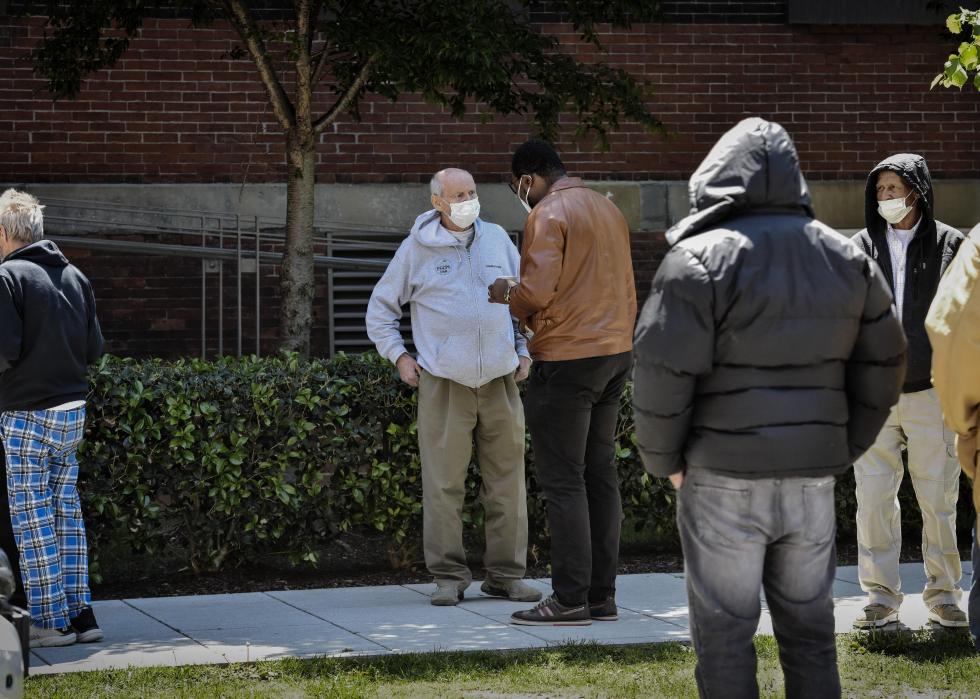
#19. Washington DC
- Overall CCVI score: 0.64
- #1 biggest area of vulnerability: Housing type & transportation (score: 1.00)
--- 144,039 housing structures with 10+ units (46.2%)
--- 99,637 households with no vehicle available (35.4% of all households)
- #2 biggest area of vulnerability: Minority status & language (score: 0.86)
--- 404,029 non-white (59.0% of population)
--- 9,951 households with limited English (3.5% of all households)
With few households possessing a car, many rely on public transit, which puts D.C. residents at increased risk of spreading and contracting COVID-19. In D.C. the demographics of those affected by COVID-19 reflect the trends of the rest of the country. Black people account for 44% of the population but 79% of deaths, and the Washington Post reports that Latino residents of D.C. are experiencing the worst infection rates.

#18. Oregon
- Overall CCVI score: 0.66
- #1 biggest area of vulnerability: Housing type & transportation (score: 0.96)
--- 212,343 housing structures with 10+ units (12.1%)
--- 119,031 households with no vehicle available (7.5% of all households)
- #2 biggest area of vulnerability: Socioeconomic status (score: 0.64)
--- 565,247 below poverty level (14.1% of population)
--- $32,045 per capita income
Marion County, which contains the capital city, Salem, has the highest rate of confirmed COVID-19 cases in the state. Many of these cases are concentrated among Woodburn residents who tend to have lower income. Woodburn also has a high proportion of farmworkers who perform essential agriculture jobs, who cannot practice social distancing on the job, and who cannot afford to miss work.

#17. Georgia
- Overall CCVI score: 0.68
- #1 biggest area of vulnerability: Socioeconomic status (score: 0.84)
--- 1.6 million below poverty level (16% of population)
--- $29,523 per capita income
- #2 biggest area of vulnerability: Minority status & language (score: 0.78)
--- 4.2 million non-white (41.0% of population)
--- 106,906 households with limited English (2.9% of all households)
The coronavirus hit southwest Georgia especially hard, where around 30% of residents live below the poverty level and most are Black. Nine counties in southwest Georgia have case rates comparable to those in some New York City boroughs. The high rates of poverty and poor health care access in this region make people in southwest Georgia—especially the Black population—less likely to be insured, more likely to have underlying health conditions, and more likely to hold essential jobs.

#16. Indiana
- Overall CCVI score: 0.70
- #1 biggest area of vulnerability: Household composition & disability (score: 0.76)
--- 996,063 over age 65 (15% of population)
--- 897,062 disabled over age 5 (13.7% of population)
- #2 biggest area of vulnerability: Epidemiological factors (score: 0.74)
--- 35.2% of adults have high blood pressure
--- 10% of adults have asthma
Indiana officials announced May 4 that people connected to nursing homes or other long-term care facilities accounted for 36.5% of reported COVID-19 deaths in the state. People over 70 represent about three-quarters of Indiana coronavirus deaths, likely due to the health issues like high blood pressure that commonly affect older populations, especially in rural areas.

#15. Kansas
- Overall CCVI score: 0.72
- #1 biggest area of vulnerability: Healthcare system factors (score: 0.78)
--- 6,466 hospital beds
--- $13,975 healthcare spending per capita
- #2 biggest area of vulnerability: Household composition & disability (score: 0.70)
--- 437,777 over age 65 (15.1% of population)
--- 366,994 disabled over age 5 (12.9% of population)
Kansas’ greatest area of vulnerability is its health care system. If data from the Harvard Global Health Institute proves correct, Kansas’ metro areas could require as many as four times the available intensive care unit beds in a moderate scenario. In this scenario, 40% of the adult population would contract COVID-19, and 8% would need to be hospitalized.
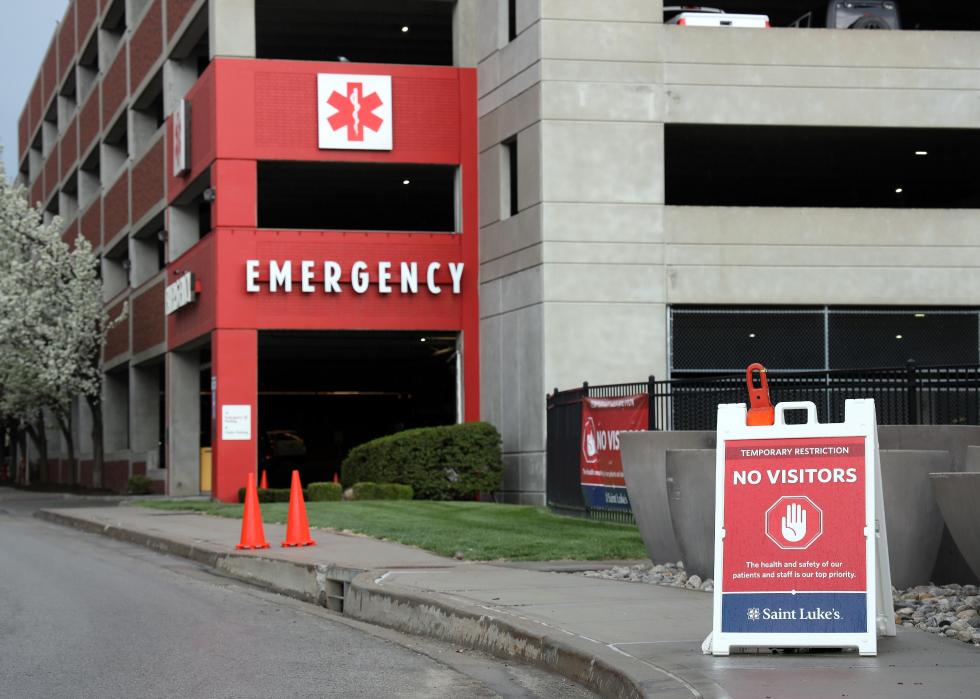
#14. Missouri
- Overall CCVI score: 0.74
- #1 biggest area of vulnerability: Household composition & disability (score: 0.80)
--- 981,692 over age 65 (16.1% of population)
--- 868,403 disabled over age 5 (14.5% of population)
- #2 biggest area of vulnerability: Epidemiological factors (score: 0.78)
--- 32% of adults have high blood pressure
--- 9.4% of adults have asthma
Six rural hospitals in Missouri have closed since 2010, which could contribute to the COVID-19 vulnerability of older people living in rural regions. About 65% of Missouri residents aged 65 or older have high blood pressure, according to 2011 data from the Missouri Department of Health & Senior Services, the most recent data provided by the state.
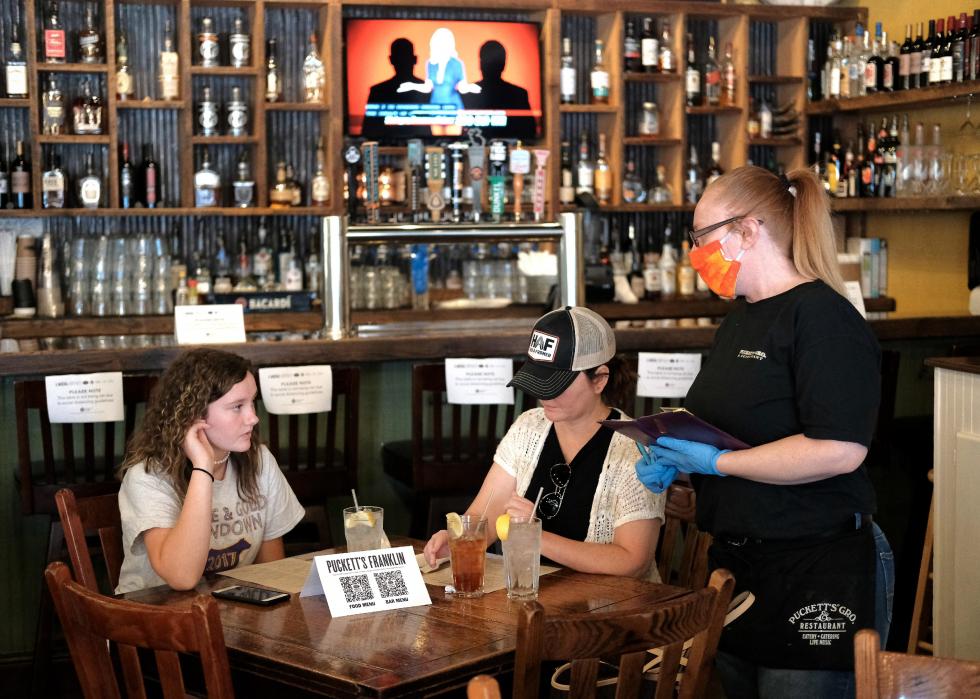
#13. Tennessee
- Overall CCVI score: 0.76
- #1 biggest area of vulnerability: Epidemiological factors (score: 0.94)
--- 38.7% of adults have high blood pressure
--- 10% of adults have asthma
- #2 biggest area of vulnerability: Socioeconomic status (score: 0.82)
--- 1.0 million below poverty level (16.1% of population)
--- $28,511 per capita income
This pandemic puts extra stress on low-income households, especially for people who work essential jobs, as they often cannot social distance or afford to stay home from work. People with low incomes also cannot regularly afford healthy food or preventive healthcare. In Memphis, the country’s second-poorest large city, has the highest rate of people who cannot regularly afford nutritious food, which leads many to turn to diets high in sodium and sugar, leading to high blood pressure.

#12. Hawaii
- Overall CCVI score: 0.78
- #1 biggest area of vulnerability: Minority status & language (score: 0.98)
--- 1.1 million non-white (75.0% of population)
--- 27,640 households with limited English (6.1% of all households)
- #2 biggest area of vulnerability: Housing type & transportation (score: 0.78)
--- 132,177 housing structures with 10+ units (24.5%)
--- 37,579 households with no vehicle available (8.2% of all households)
Native Hawaiians and Pacific Islanders have higher rates of confirmed coronavirus infections relative to their share of the population both in Hawaii and in other states like California. Part of this overrepresentation may be because they often work in essential jobs, have large families, and live in multigenerational households, among other factors—like social inequities—that could put them at greater risk for exposure.
You may also like: Social isolation and mental health: tips from experts on staying healthy
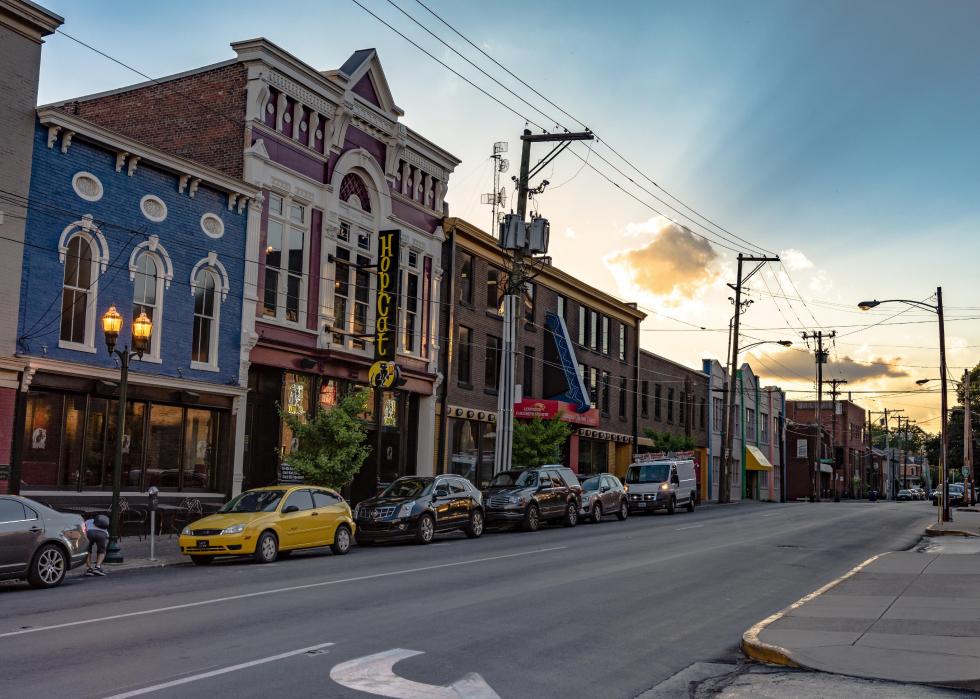
#11. Kentucky
- Overall CCVI score: 0.80
- #1 biggest area of vulnerability (tie): Household composition & disability (score: 0.90)
--- 691,509 over age 65 (15.6% of population)
--- 755,386 disabled over age 5 (17.3% of population)
- #1 biggest area of vulnerability (tie): Epidemiological factors (score: 0.90)
--- 39.4% of adults have high blood pressure
--- 10.7% of adults have asthma
Older people in Kentucky nursing homes are particularly vulnerable to COVID-19 as many facilities failed at infection prevention and control before the pandemic. As of May 4, long-term care facility residents represented at least 842 of Kentucky’s 5,934 confirmed cases.

#10. South Carolina
- Overall CCVI score: 0.82
- #1 biggest area of vulnerability: Socioeconomic status (score: 0.86)
--- 770,632 below poverty level (16% of population)
--- $27,986 per capita income
- #2 biggest area of vulnerability: Household composition & disability (score: 0.84)
--- 829,083 over age 65 (16.7% of population)
--- 710,864 disabled over age 5 (14.6% of population)
The effects of COVID-19 have prompted some South Carolina officials to call on the state to expand Medicaid, which would allow more than 300,000 low-income residents to obtain health care coverage. Without access to quality health care, these people are more likely to develop conditions like high blood pressure and respiratory issues, predisposing them to severe cases of COVID-19.

#9. North Carolina
- Overall CCVI score: 0.84
- #1 biggest area of vulnerability: Healthcare system factors (score: 0.98)
--- 23,194 hospital beds
--- $41,838 healthcare spending per capita
- #2 biggest area of vulnerability: Socioeconomic status (score: 0.80)
--- 1.5 million below poverty level (15.4% of population)
--- $29,456 per capita income
As of early May, the North Carolina Department of Health and Human Services reported that over 7,000 beds were still available for patients statewide. But in the moderate scenario predicted by the Harvard Global Health Institute, in which 40% of the adult population is infected and 8% require hospitalization, North Carolina metro areas will need two to four times the available beds in that period, depending on the area in question.
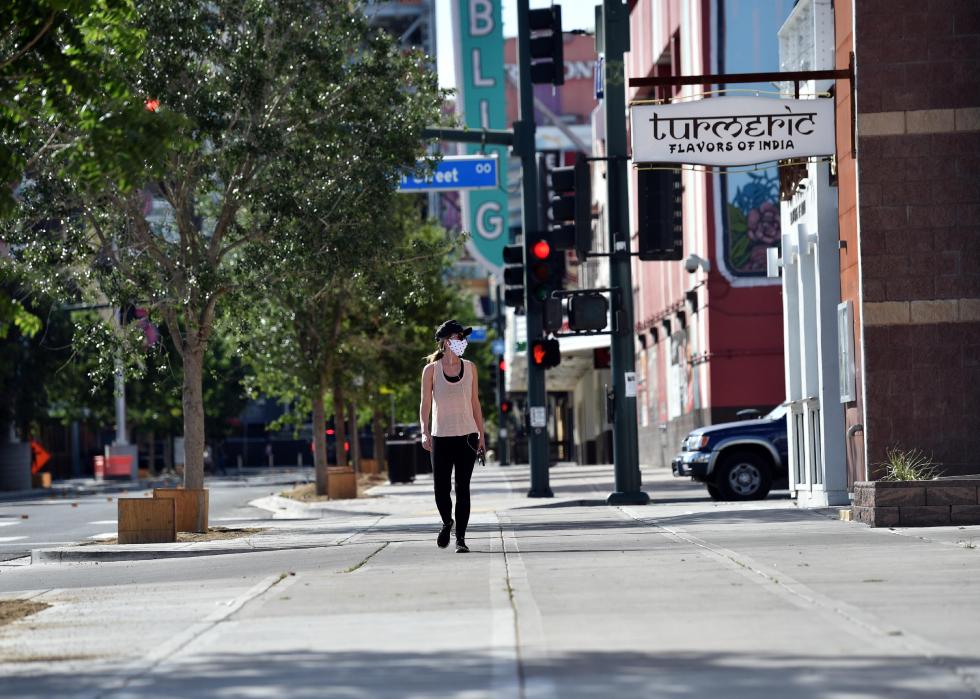
#8. Nevada
- Overall CCVI score: 0.86
- #1 biggest area of vulnerability: Epidemiological factors (score: 1.00)
--- 32.7% of adults have high blood pressure
--- 10.4% of adults have asthma
- #2 biggest area of vulnerability: Minority status & language (score: 0.92)
--- 987,746 non-white (33.8% of population)
--- 66,263 households with limited English (6.2% of all households)
Clark County, which is home to over 2 million of the state’s roughly 3 million residents, reported 1,025 COVID-19 hospitalizations out of 4,408 confirmed cases on May 4. Hypertension was the most common underlying health condition reported. Rates of hypertension are highest among Black Clark County residents, which is likely due to socioeconomic factors, poor health care access, and legacies of racist policies in the county and nationwide, according to the Southern Nevada Health District’s Office of Chronic Disease Prevention and Health Promotion manager, Maria Azzarelli.
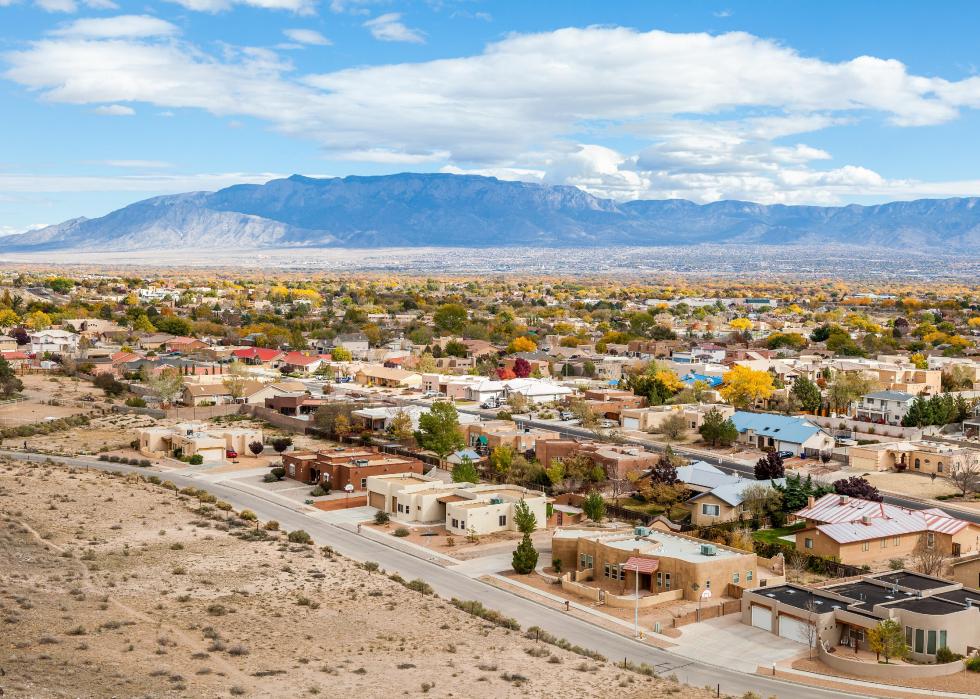
#7. New Mexico
- Overall CCVI score: 0.88
- #1 biggest area of vulnerability: Socioeconomic status (score: 0.98)
--- 410,389 below poverty level (20% of population)
--- $26,085 per capita income
- #2 biggest area of vulnerability: Minority status & language (score: 0.94)
--- 533,548 non-white (25.5% of population)
--- 41,207 households with limited English (5.3% of all households)
In Native American communities in northwestern New Mexico, thousands of homes lack running water, people live in crowded housing, food and medical care can be difficult to access, and people tend to have low incomes. Northwestern New Mexico has also reported higher rates of coronavirus infections. The socioeconomic disparities experienced by these communities can make it more difficult to maintain a healthy lifestyle and contain the spread of COVID-19.

#6. West Virginia
- Overall CCVI score: 0.90
- #1 biggest area of vulnerability (tie): Socioeconomic status (score: 0.96)
--- 315,464 below poverty level (17.8% of population)
--- $25,479 per capita income
- #1 biggest area of vulnerability (tie): Household composition & disability (score: 0.96)
--- 344,719 over age 65 (18.8% of population)
--- 351,034 disabled over age 5 (19.5% of population)
- #1 biggest area of vulnerability (tie): Epidemiological factors (score: 0.96)
--- 43.5% of adults have high blood pressure
--- 12.7% of adults have asthma
West Virginia’s elderly population has been affected by nursing home outbreaks, and the governor issued an executive order to test all nursing home residents and staff in the state. As of May 5, about 9% of residents at 25 long-term care facilities had tested positive, according to preliminary data from the West Virginia Department of Health and Human Resources.

#5. Alabama
- Overall CCVI score: 0.92
- #1 biggest area of vulnerability (tie): Socioeconomic status (score: 0.92)
--- 829,400 below poverty level (17.5% of population)
--- $26,846 per capita income
- #1 biggest area of vulnerability (tie): Healthcare system factors (score: 0.92)
--- 15,542 hospital beds
--- $21,977 healthcare spending per capita
Alabama did not expand Medicaid under the Affordable Care Act, and, like in other states that followed suit, some officials are pushing to expand coverage for low-income residents in light of COVID-19. According to data from the Census Bureau, about 10% of Alabamians are uninsured.

#4. Oklahoma
- Overall CCVI score: 0.94
- #1 biggest area of vulnerability: Healthcare system factors (score: 0.96)
--- 10,312 hospital beds
--- $17,108 healthcare spending per capita
- #2 biggest area of vulnerability: Household composition & disability (score: 0.94)
--- 589,230 over age 65 (15% of population)
--- 610,546 disabled over age 5 (15.9% of population)
As part of its hospital surge plan to address potential health care system vulnerabilities, state officials struck a deal with Oklahoma City and Tulsa hospitals to reserve beds in case of a sudden influx of COVID-19 hospitalizations. As of May 6, people over 65 accounted for nearly 30% of Oklahoma’s confirmed cases, according to the State Department of Health. The state’s population of people with disabilities may be disproportionately affected by the pandemic as well, not necessarily in terms of case counts, but in terms of limitations to their care and access to services.

#3. Arkansas
- Overall CCVI score: 0.96
- #1 biggest area of vulnerability: Household composition & disability (score: 0.98)
--- 487,536 over age 65 (16.3% of population)
--- 503,918 disabled over age 5 (17.2% of population)
- #2 biggest area of vulnerability: Healthcare system factors (score: 0.94)
--- 7,848 hospital beds
--- $12,824 healthcare spending per capita
In addition to having a high overall CCVI score, Arkansas has a high social vulnerability index score, according to the CDC, and 45.4% of Arkansas residents live in areas considered to be more vulnerable than other areas. Arkansas’ high proportion of older people and health care system factors are the main contributors, but relatively high poverty rates also contribute to the state’s vulnerability. As of May 2, people over 65 accounted for 16.9% of the state’s confirmed cases but almost 69.9% of reported deaths, according to the Arkansas Department of Health.
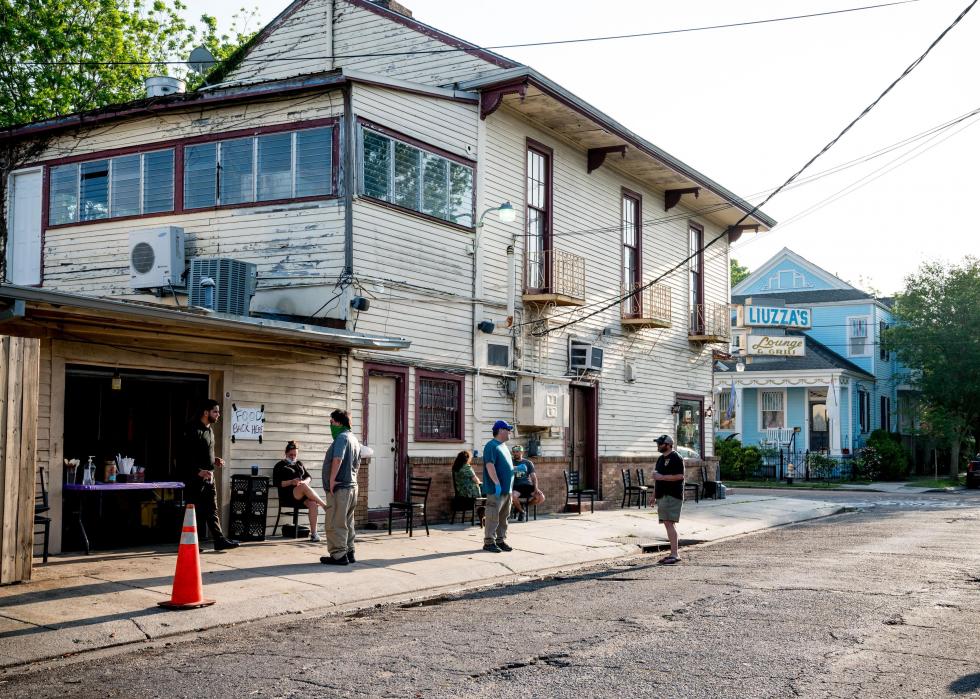
#2. Louisiana
- Overall CCVI score: 0.98
- #1 biggest area of vulnerability: Epidemiological factors (score: 0.98)
--- 39% of adults have high blood pressure
--- 9% of adults have asthma
- #2 biggest area of vulnerability: Socioeconomic status (score: 0.94)
--- 878,394 below poverty level (19.4% of population)
--- $27,027 per capita income
While Black people represent about a third of Louisiana's population, they have accounted for 57.4% of deaths as of May 4, according to data from the state Department of Health. Additionally, over half of those who died from COVID-19 in Louisiana also had high blood pressure. Among Black people, high rates of hypertension in the South are tied to poverty.
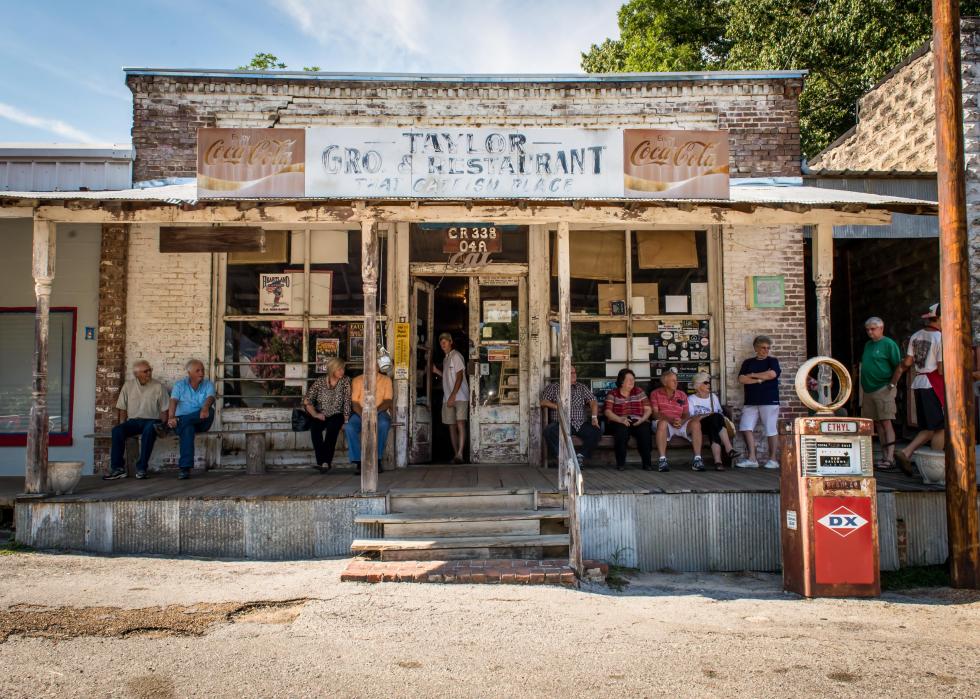
#1. Mississippi
- Overall CCVI score: 1.00
- #1 biggest area of vulnerability (tie): Socioeconomic status (score: 1.00)
--- 599,795 below poverty level (20.8% of population)
--- $23,434 per capita income
- #1 biggest area of vulnerability (tie): Household composition & disability (score: 1.00)
--- 449,478 over age 65 (15% of population)
--- 475,522 disabled over age 5 (16.3% of population)
Mississippi residents are especially vulnerable to the effects of COVID-19. One in every five residents lives below the poverty level, and low-income people are more likely to work in jobs like public transportation or grocery stores that could expose them to the virus. People with low incomes also often lack health insurance and have higher rates of chronic diseases.



